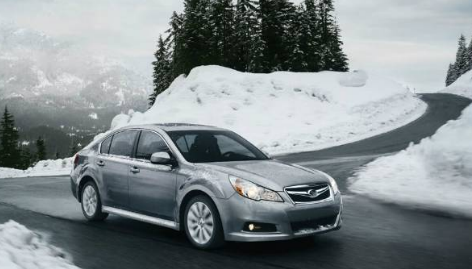When Is Tire Siping a Good Idea?
Posted on Nov 13, 2019 in Safety | 2 comments

My parents recently leased a new 2012 Subaru Legacy. They wanted a vehicle to replace their2000 Honda CR-V, which served them well through many harsh Pacific Northwest winters.
This being their first winter with the car, they were interested to see how it did once the snow started piling up. Well, this week, they got their wish. With temps well below freezing and hard-packed snow covering many city streets, my mom approached the first incline of the season. She made it up the slope, stopped at the intersection and immediately slid to the curb. Like hot butter on a cold plate.
The AWD system of the Subaru wasn’t the issue here… it was obviously the tires. Which raised the question: Shouldn’t AWD cars sold in markets that get snow come equipped with proper tires?
A visit to the dealer confirmed that the Subie came equipped with tires meant more for highway cruising than winter driving. The service advisor gladly recommended snow tires he could install right away. My dad asked about siping the tires, which the service guy said would significantly reduce their life.

Subsequent visits to independent tire shops produced a different opinion, with both shops saying they won’t sell a new tire without siping it first, because it adds to the life and grip of the tire.
The tires on the Legacy were eventually siped, and their grip vastly improved. A stop on the same hill as before resulted in the car staying firmly planted in its proper place, with no problems accelerating up the hill.
In this case, siping seemed to do the job and made the tires worthy of the snow and ice so often experienced here.
However, tire manufacturers go to great lengths to create specific tread patterns, and siping alters those patterns. Why pay someone to cut into a new tire that has been designed for a specific purpose?
Here’s my verdict on tire siping: If you have a car equipped with tires that need additional winter grip, have them siped. If you’re buying new tires, take the time to research and buy the ones that were designed for your driving needs and don’t let the salesman talk you into siping them.





There’s snow and there’s snow. The Eskimo have several dozen names for the various sorts. Siping seems to work best for that intermediate snow that’s between freezing rain/sleet and the true white stuff. When the whole world turns really white and powdery, sipes aren’t needed, decent tires and a brain behind the wheel are. Slid into the curb? Brakes must have been locked…Just a thought.
Holy cats! Tire manurfacturers spend millions in research on the right sipe pattern for a tire’s expected use and loads, then some yahoo local busineses decides that, without any type of research or testing, cutting into a new tire is a correct and proper thing to do?!?
The only reason that I’d authorize new sipes into my tires is if I didn’t care about any introducing a thousand more points of wear and failure points that I’d love to empty my wallet replacing in a far shorter time than expected!